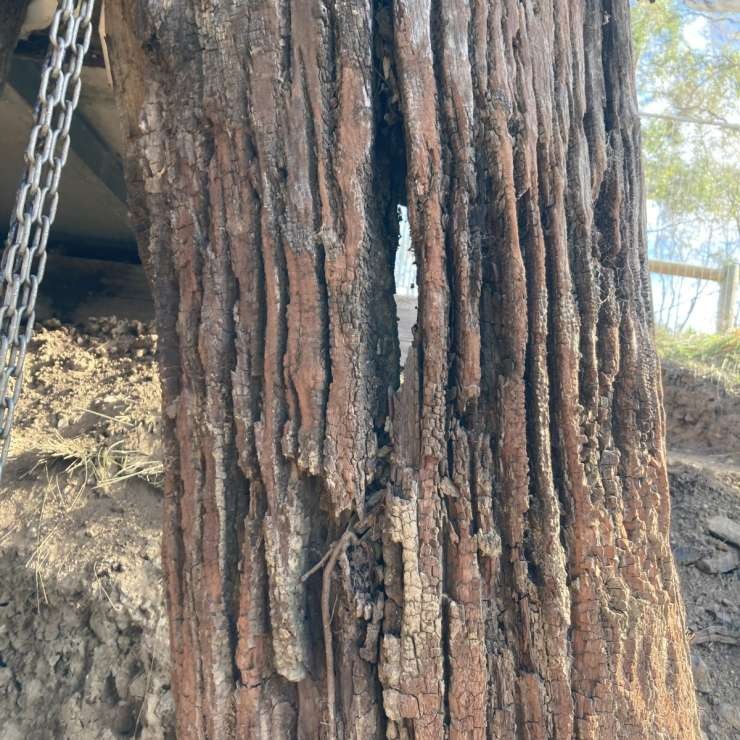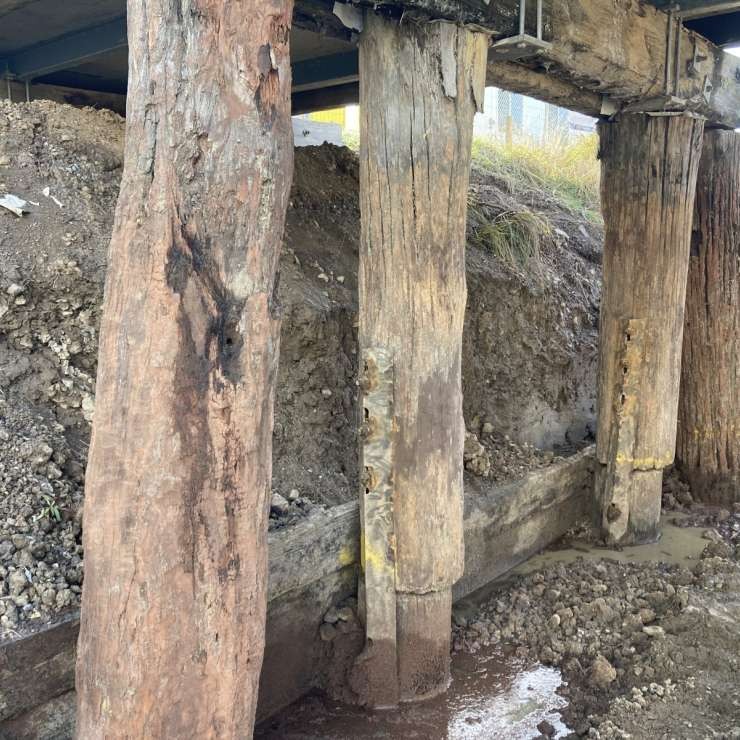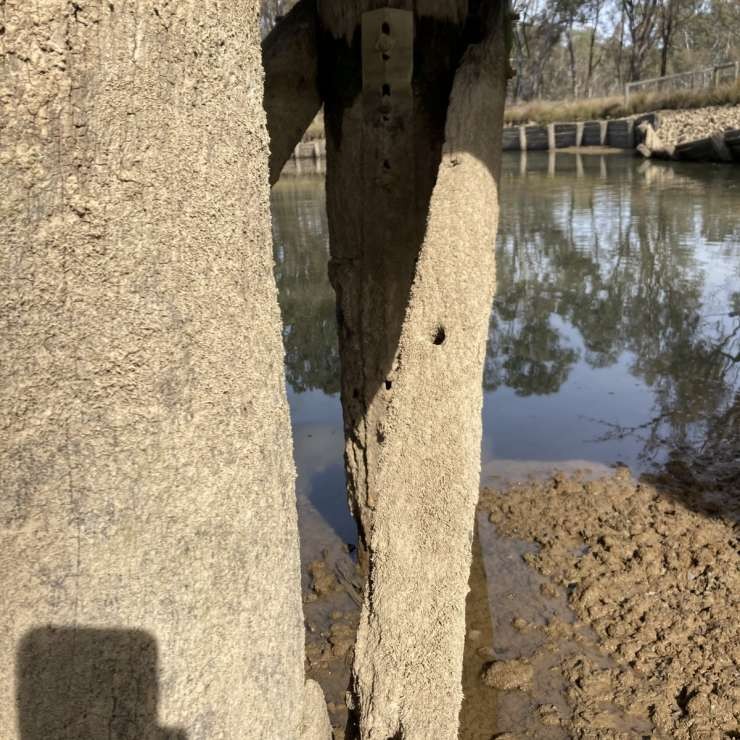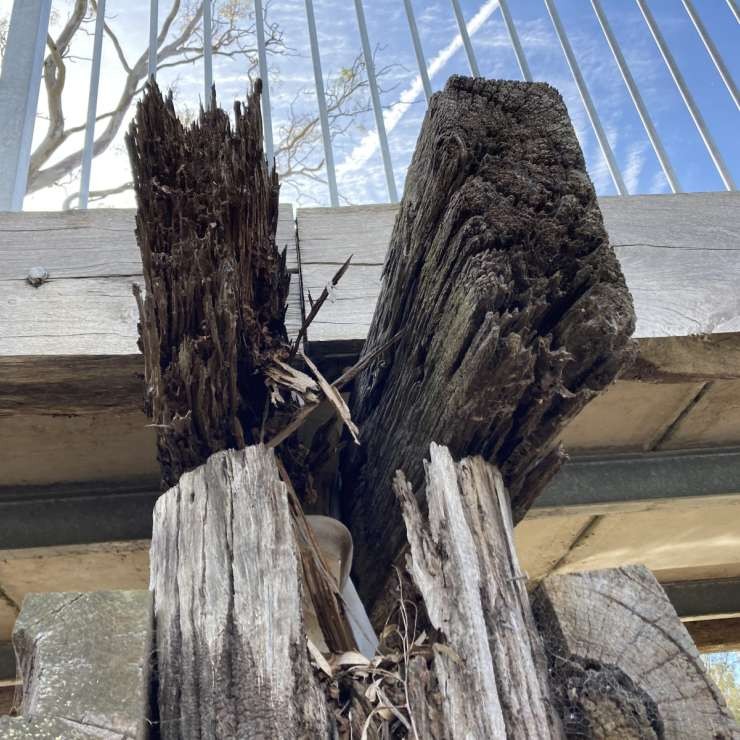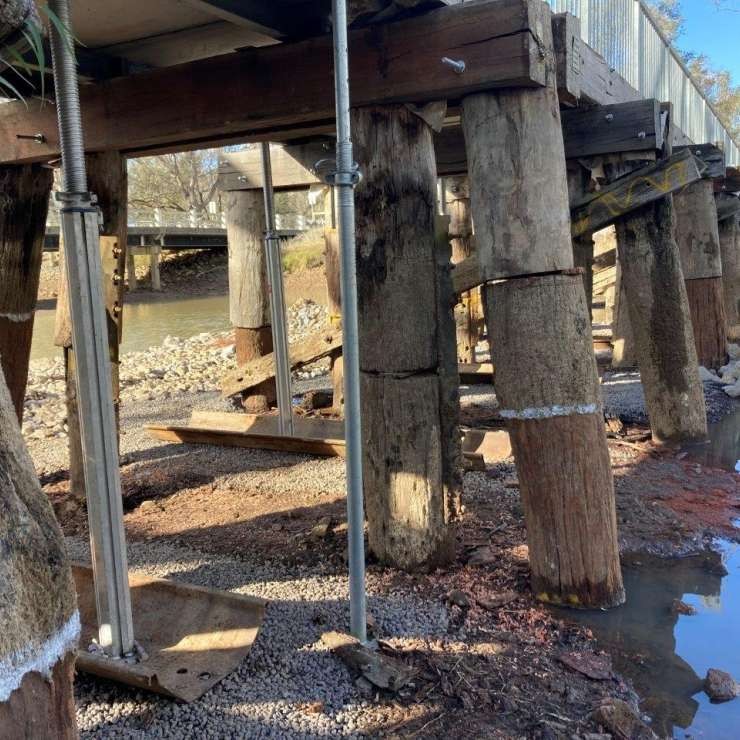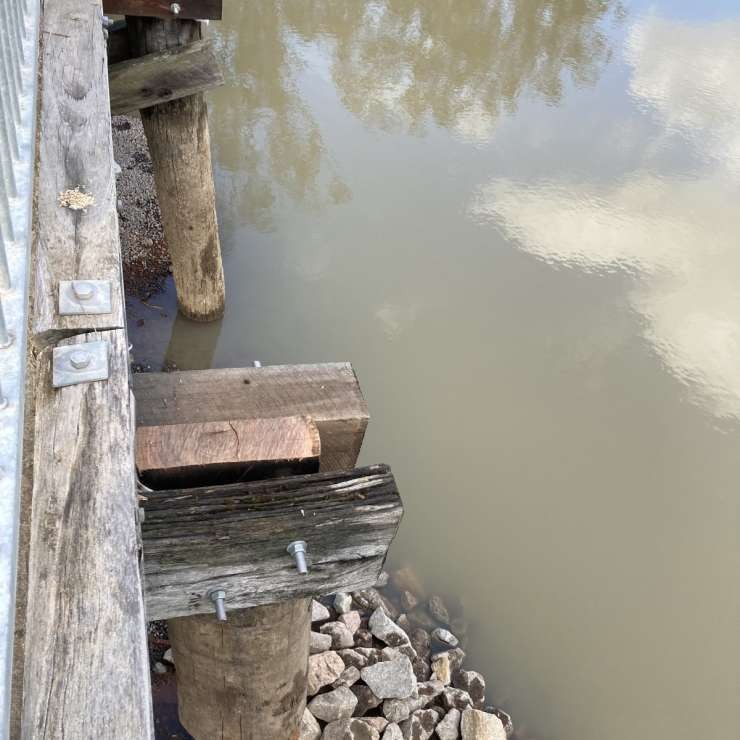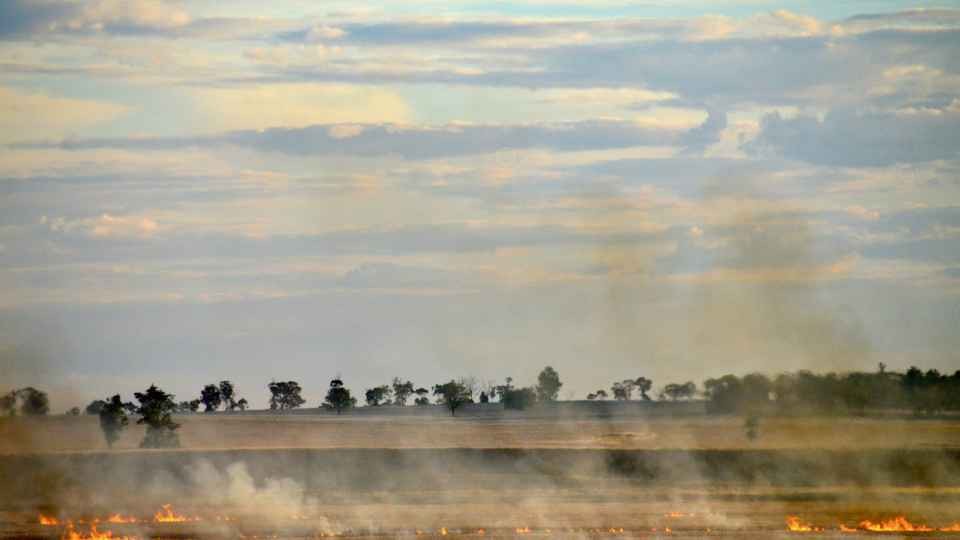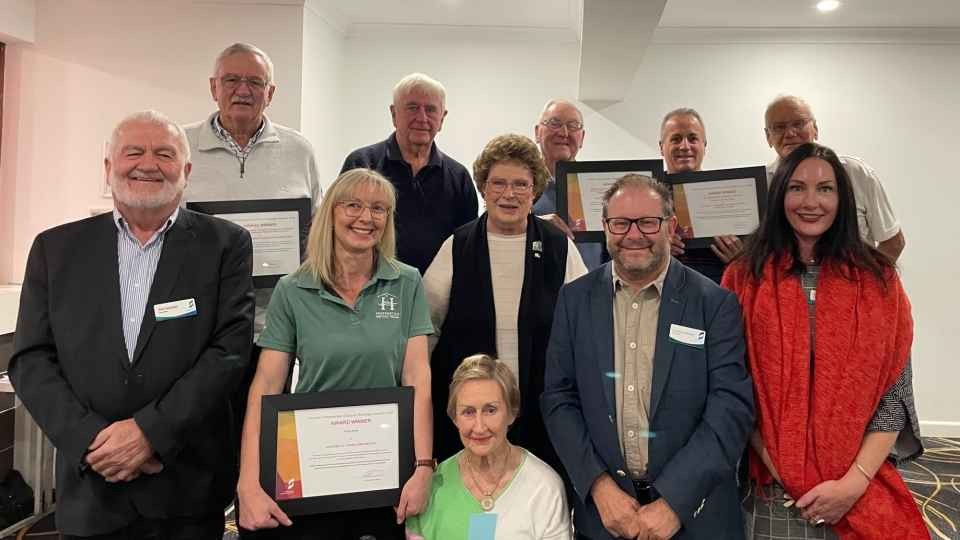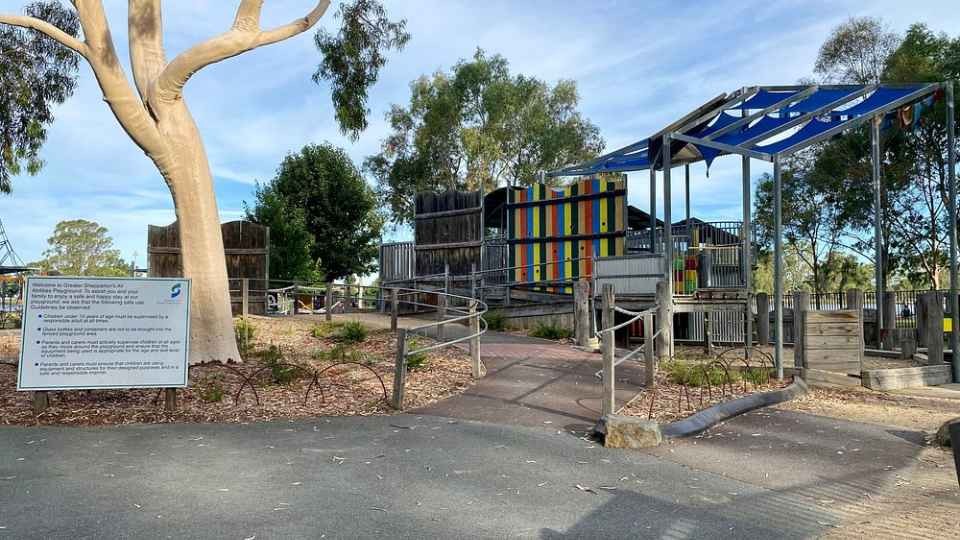The essential maintenance and repair works have restored the timber piles which had suffered significant erosion over time, to ensure the bridge can be used and enjoyed for many years to come.
The works, undertaken during May and June, included:
- Timber pile repairs including pile 'wrap and pour', and splicing new timber sections into existing.
- Supplying and replacing timber crossheads, bolts and fixtures.
- Applying timber preservation treatments and associated works
- Reinstatement of fencing and the surrounding site.
The completion of these restoration works ensures compliance and safety for all user groups, including pedestrians and cyclists, and ensures the rich history of the bridge is preserved for future generations.
Council thanks the community for their patience and cooperation while these important works were carried out.
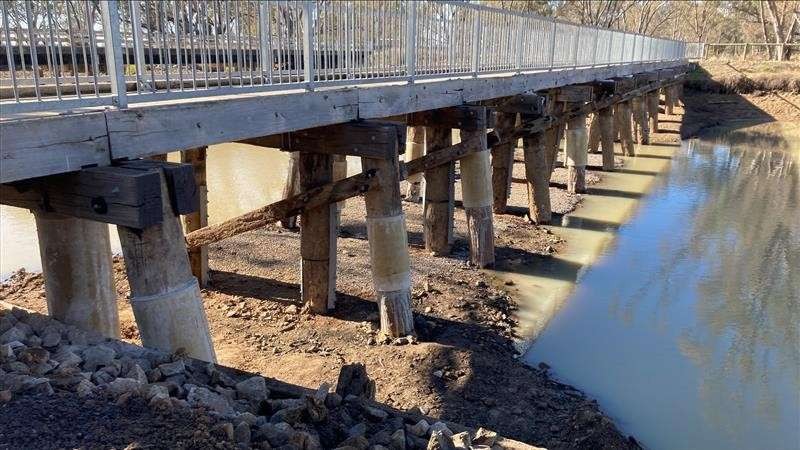
Murchison Rail Trail Bridge - A rich history
The Murchison Rail Trail Bridge, over the Stuart Murray Canal, adjoins the Bendigo-Murchison Road. Its history is long and impressive, dating back to the 1800's.
Murchison Rail Trail
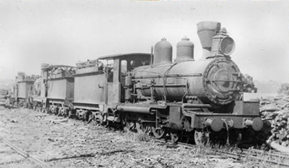 The Murchison Rail Trail Bridge, over the Stuart Murray Canal, adjoins the Bendigo-Murchison Road. Its history is long and impressive, dating back to the 1800's. However, its location on the east side of the river in Murchison East infuriated residents in the township. Residents were partly compensated by the construction of a branch line which crossed the river on a timber trestle bridge and followed a path along Station Street on its way to Rushworth. Its opening on 1 September 1889 resulted in a grass fire when the steam engine caused parts of the countryside to catch fire! Residents received £6,000 in compensation (worth approximately $138,000 today). The line was later extended to Colbinabbin to carry passengers and grain traffic, and, finally to Stanhope (in 1914) to service the butter factory.
The Murchison Rail Trail Bridge, over the Stuart Murray Canal, adjoins the Bendigo-Murchison Road. Its history is long and impressive, dating back to the 1800's. However, its location on the east side of the river in Murchison East infuriated residents in the township. Residents were partly compensated by the construction of a branch line which crossed the river on a timber trestle bridge and followed a path along Station Street on its way to Rushworth. Its opening on 1 September 1889 resulted in a grass fire when the steam engine caused parts of the countryside to catch fire! Residents received £6,000 in compensation (worth approximately $138,000 today). The line was later extended to Colbinabbin to carry passengers and grain traffic, and, finally to Stanhope (in 1914) to service the butter factory.
After leaving Murchison, the rail trail crosses the main irrigation cancel built by the original irrigation “Trust” and travels beside the Stuart Murray canals (constructed 1890-93), and also the Cattanach canal (1957) before the trail skirts the northern extent of Doctors Swap, a natural redgum wetland at the head of the Mosquito Depression. The Cattanach and Stuart Murray canals now combine with the Goulburn Eastern Main Channel to divert all necessary stock and domestic water for the Goulburn Murray Irrigation District and areas further west.
Stuart Murray Canal
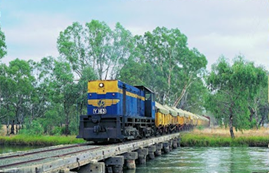 Early farms in Northern Victoria were ravaged by drought. Early attempts at irrigation yielded spectacular results, and encouraged the rapid development of irrigated farming in the Goulburn-Murray river region. The United Echuca Waranga Waterworks Trust was formed in 1885 to pump water from the Goulburn river at a site 3km upstream of Murchison. By the time the pump was operational in 1885, the Goulburn Weir had been built at Wahring as the head-works of a huge government-supported national irrigation scheme. The Stuart Murray Canal was constructed as the second stage of the scheme. The Canal carries water by gravity from the Goulburn Weir to Murchison and on to Waranga Basin via the gentle grades of the Mosquito Depression, a distance of 38km. The canal was originally built over numerous natural water courses in its course to Murchison, and timber channels, constructed of red gum lined with Oregon pine slabs up to 1m thick, were incorporated in its construction. Sir John Monash later designed and built a series of innovative concrete subways to allow the Goulburn Eastern Main Channel to carry Goulburn river water from Wahring to irrigators in Shepparton East. Goulburn River water is now used for irrigation and stock and domestic purposes throughout northern Victoria.
Early farms in Northern Victoria were ravaged by drought. Early attempts at irrigation yielded spectacular results, and encouraged the rapid development of irrigated farming in the Goulburn-Murray river region. The United Echuca Waranga Waterworks Trust was formed in 1885 to pump water from the Goulburn river at a site 3km upstream of Murchison. By the time the pump was operational in 1885, the Goulburn Weir had been built at Wahring as the head-works of a huge government-supported national irrigation scheme. The Stuart Murray Canal was constructed as the second stage of the scheme. The Canal carries water by gravity from the Goulburn Weir to Murchison and on to Waranga Basin via the gentle grades of the Mosquito Depression, a distance of 38km. The canal was originally built over numerous natural water courses in its course to Murchison, and timber channels, constructed of red gum lined with Oregon pine slabs up to 1m thick, were incorporated in its construction. Sir John Monash later designed and built a series of innovative concrete subways to allow the Goulburn Eastern Main Channel to carry Goulburn river water from Wahring to irrigators in Shepparton East. Goulburn River water is now used for irrigation and stock and domestic purposes throughout northern Victoria.


